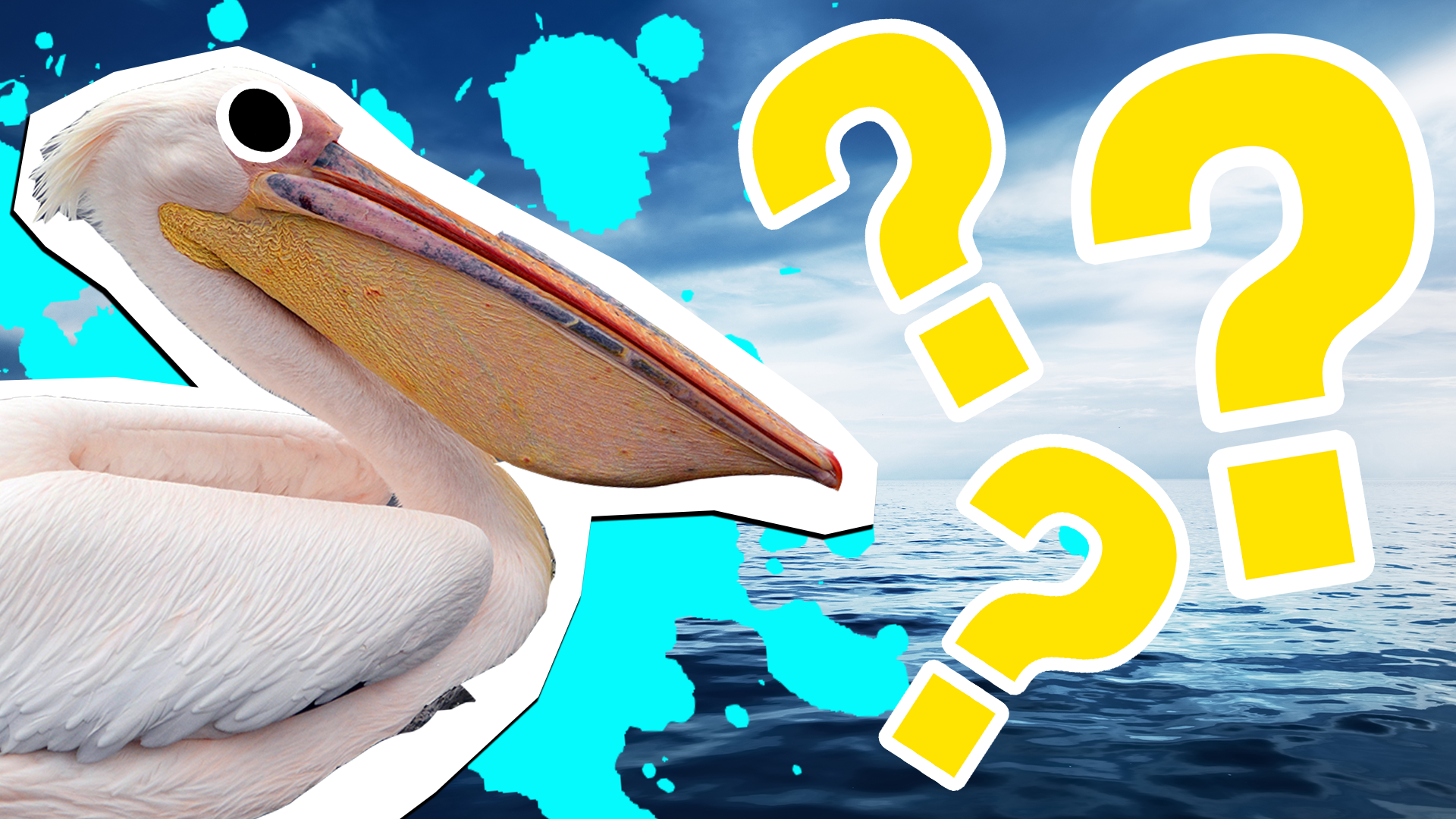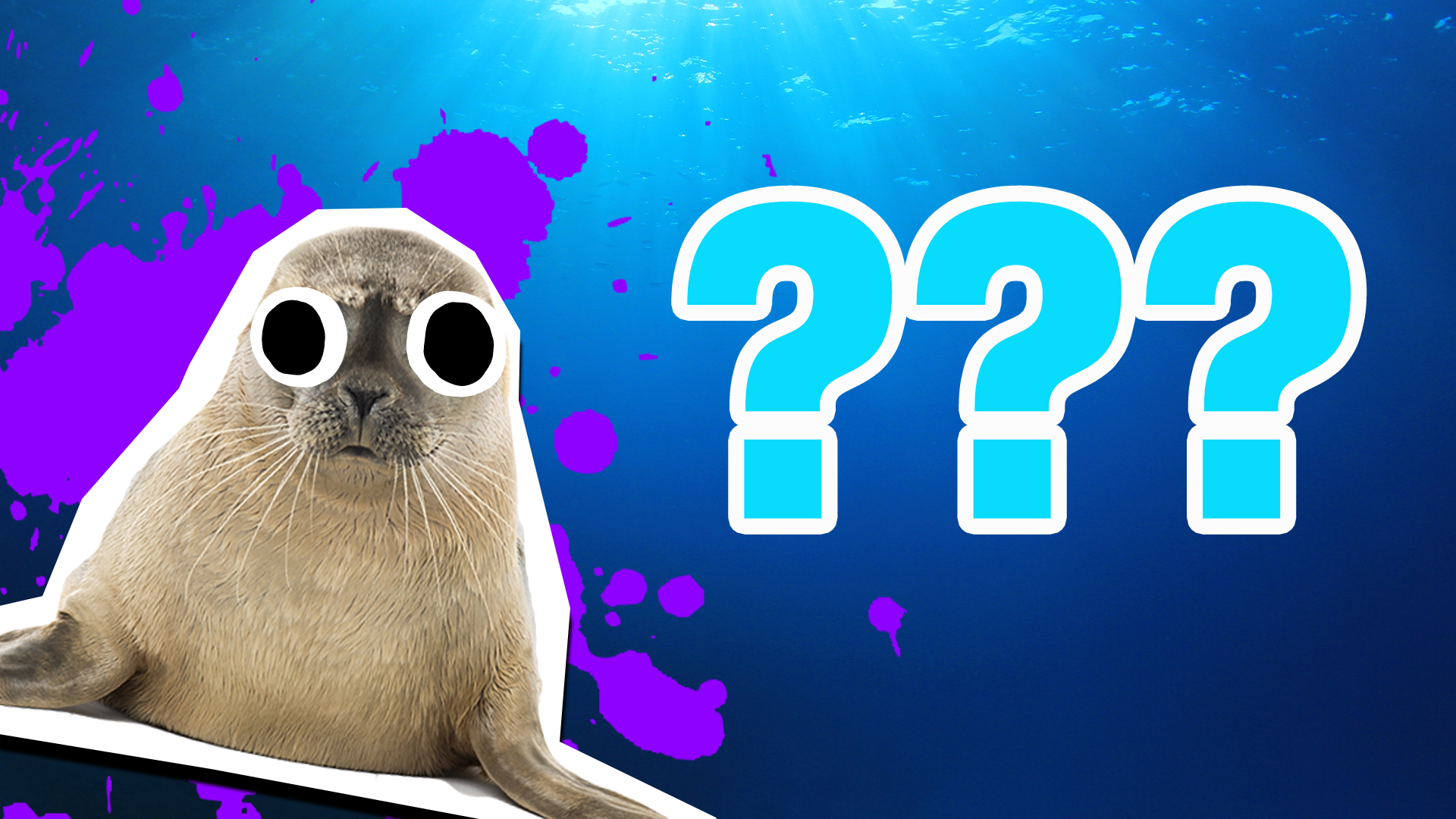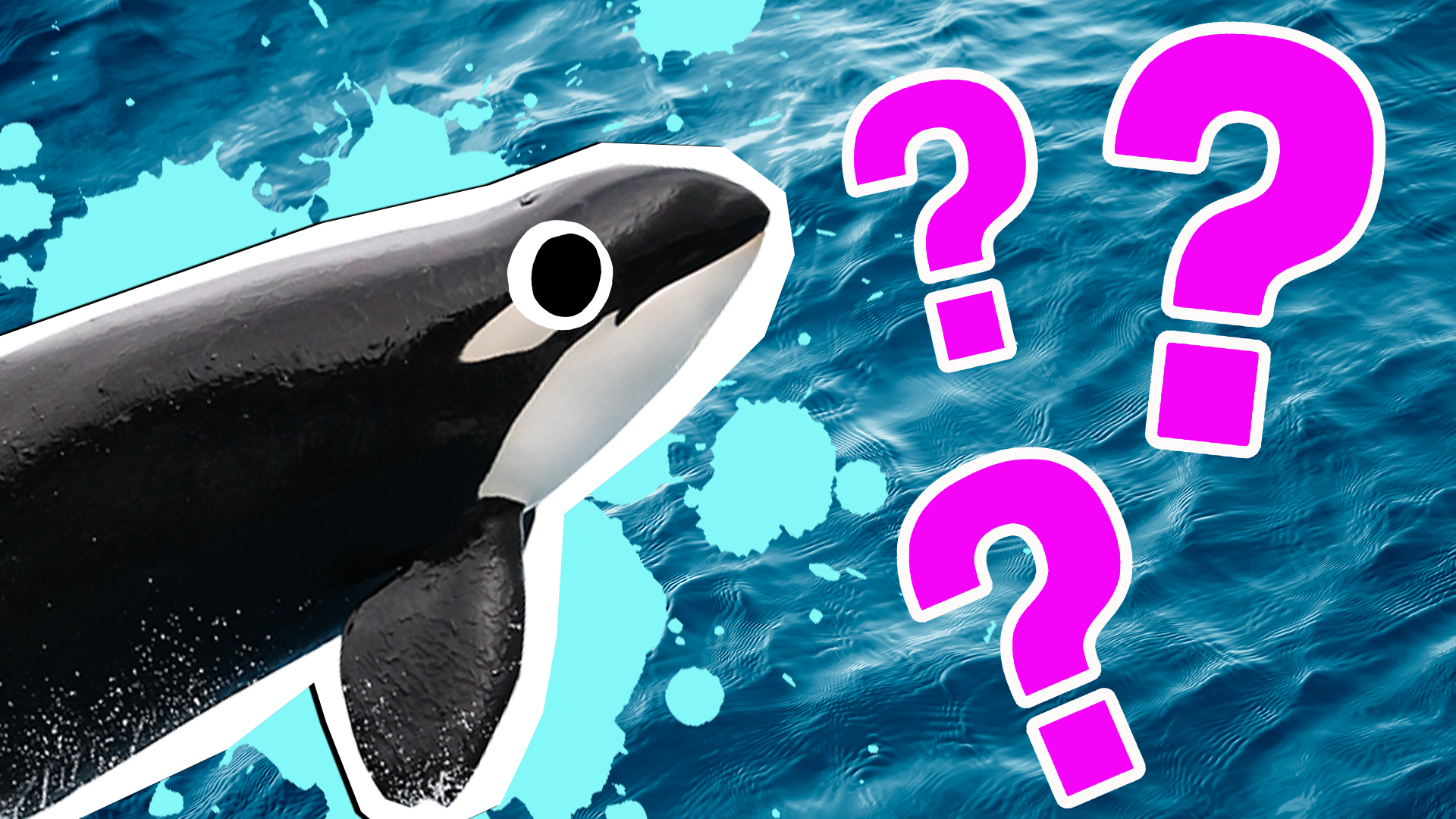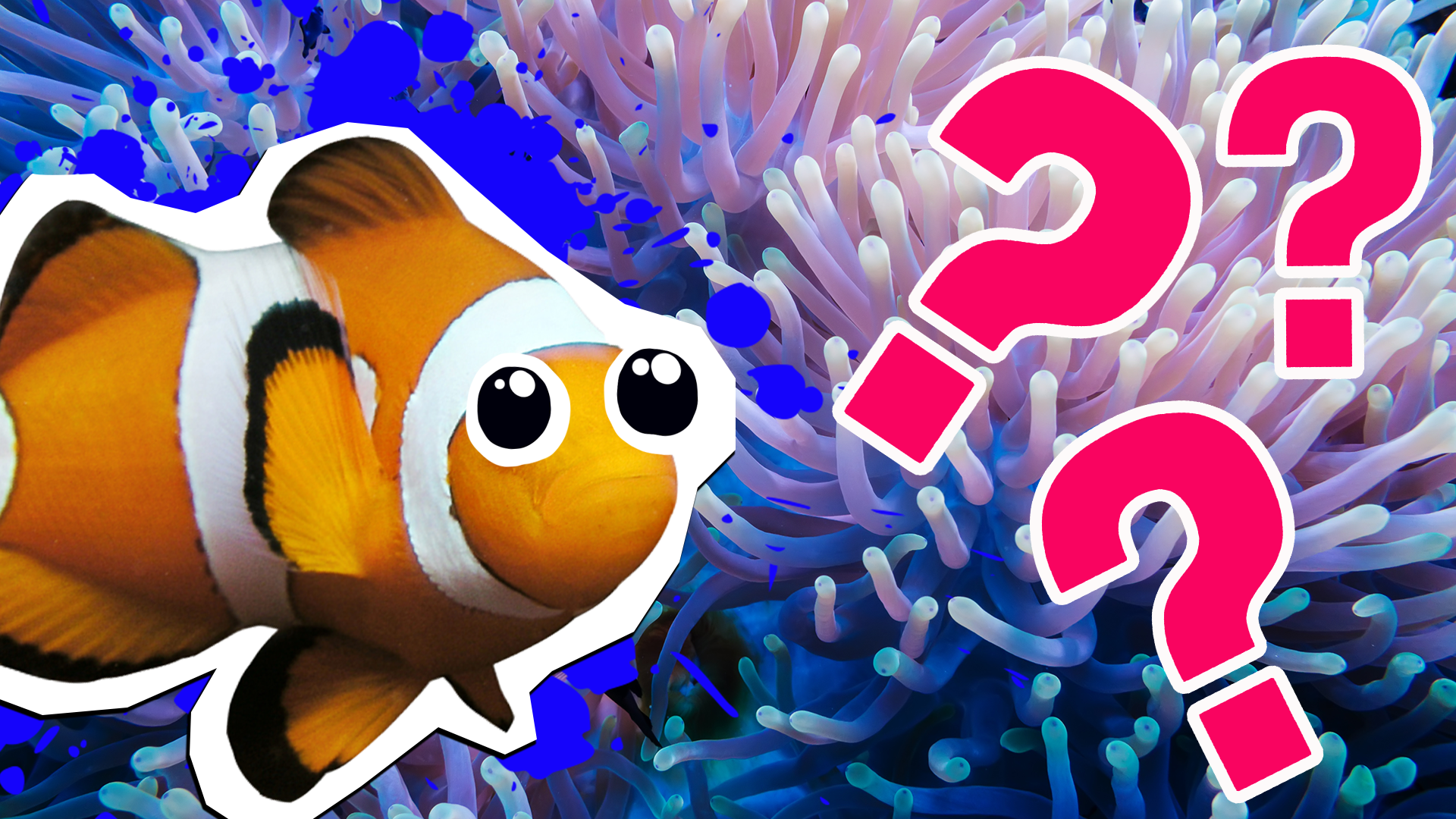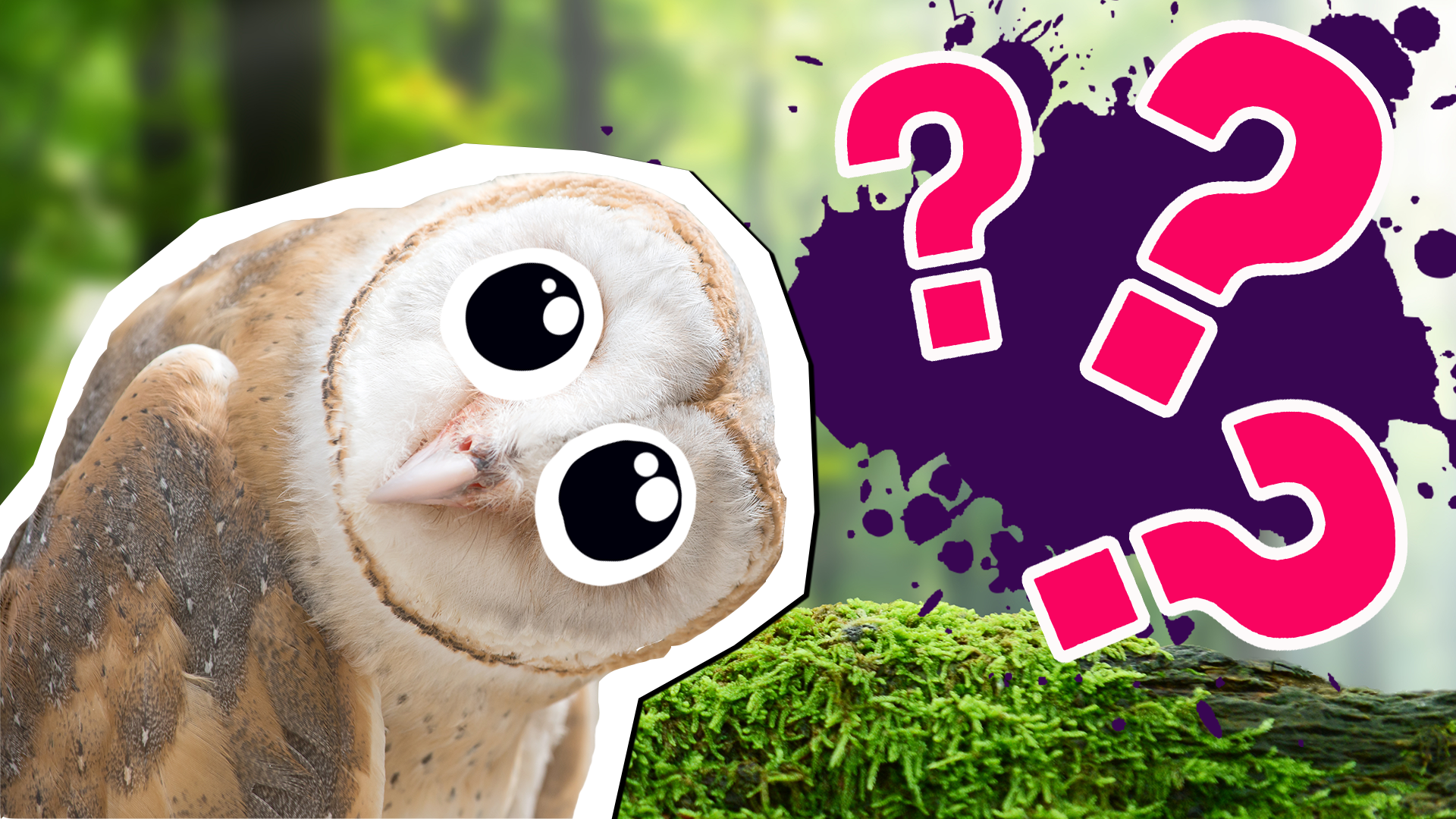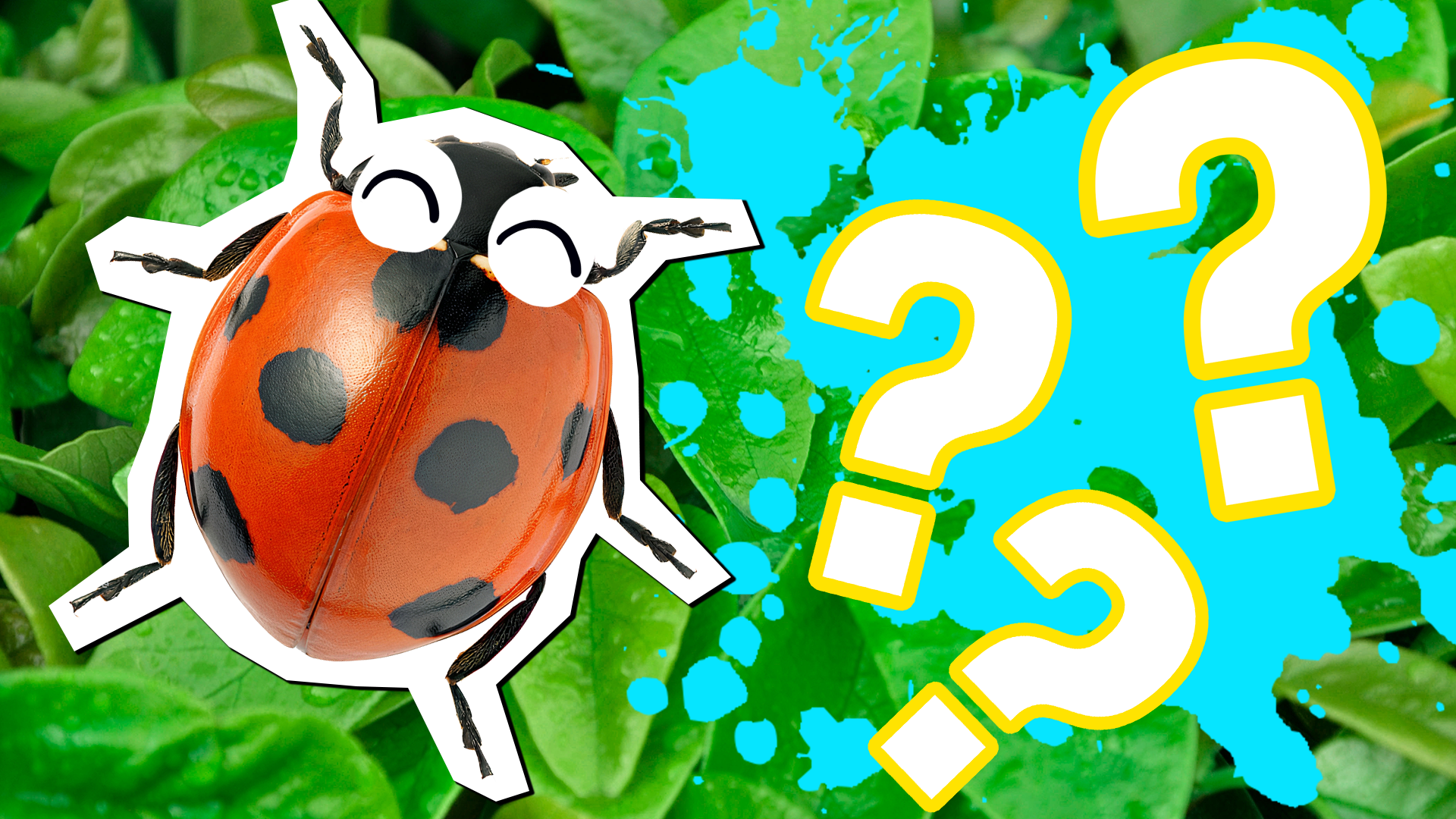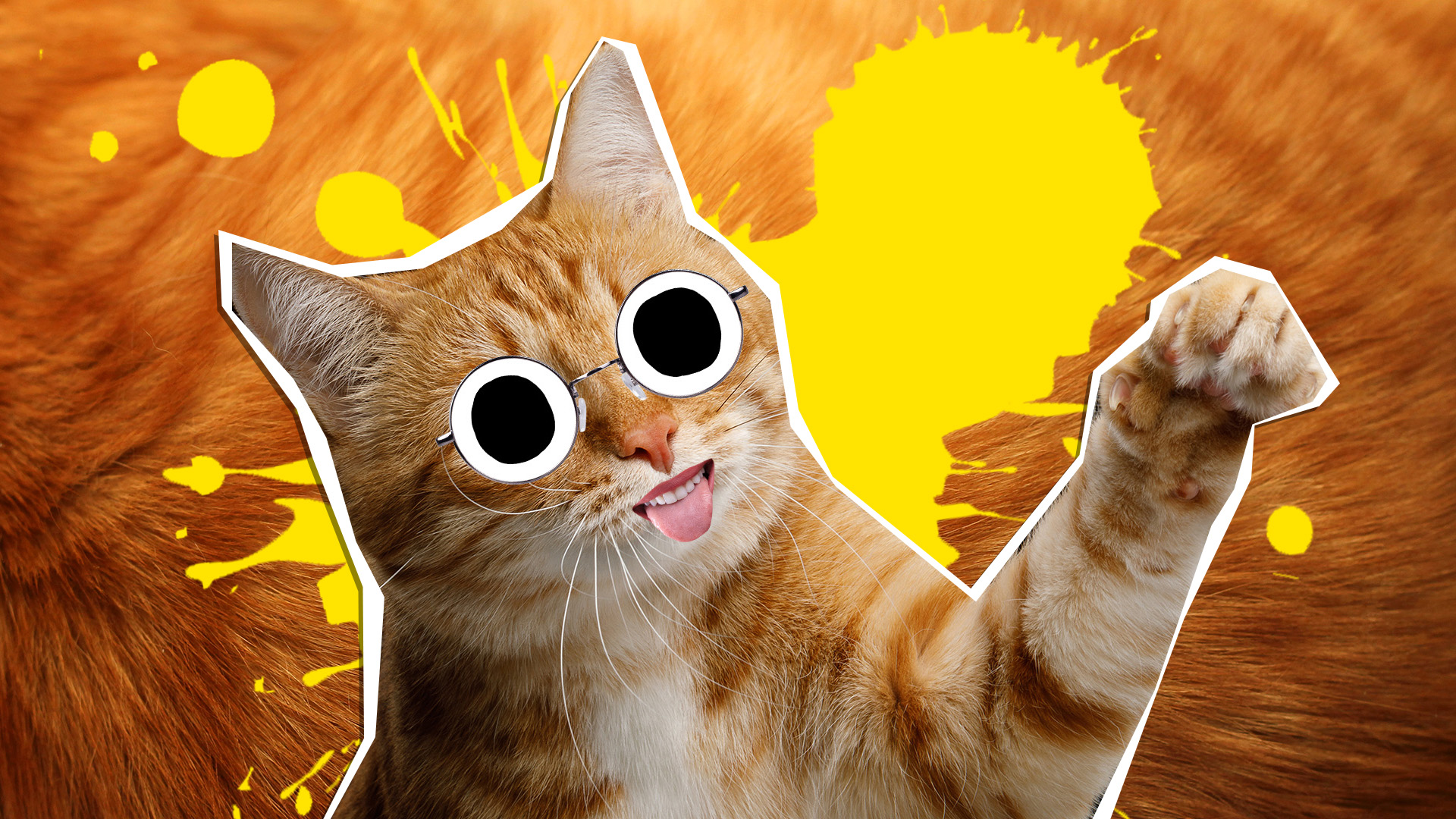15 Perfectly Pleasant Pufferfish Facts!
They're spiky, they're deadly, and they're also kind of adorable! Get ready to learn all about the most spherical of sea creatures, the pufferfish!
Pufferfish can be found in warm oceans and brackish water in the tropics and subtropics - and they're also a very popular aquarium fish, so there's a good chance you've seen one! If you have you already know how charming they can be, with their friendly faces and pretty patterns. But there's probably a lot you don't know about them! You definitely know they can blow up like a balloon - but do you know why? And how? What about their strange and wonderful eyes - or why you really, REALLY shouldn't take a bite out of one? Learn it all right here, right now! And we've got more sea creature facts for you if you just can't get enough - learn all about clownfish, goblin sharks, and mako sharks!
1. They're a big family!
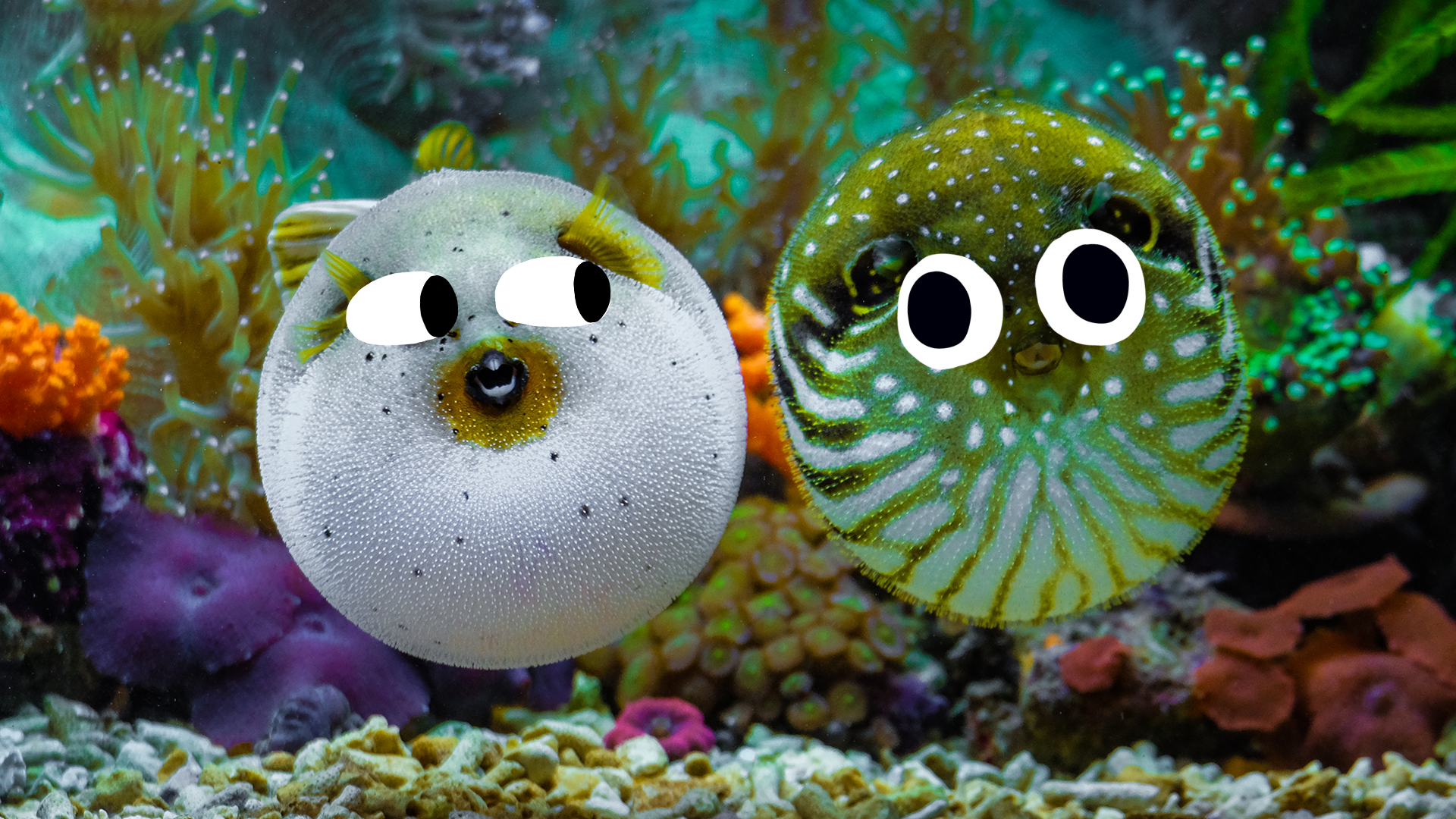
"Pufferfish" is a word used to describe a lot of different fish. They all fall in the tetraodontidae family, which includes over 190 different species! Most of them are saltwater, but about 30 species live in freshwater. Tetraodontidae have several things in common, like their teeth (more on that later), their toxicity (more on that later too!) and of course, their ability to get puffed up! They go by a lot of names, including pufferfish, balloonfish, blowfish, globefish, swellfish, toadies, and sea squab.
2. They have a cousin, too!

Porcupinefish are often called blowfish and pufferfish, but they're a bit different from tetraodontidae. The big difference is that porcupinefish have big external spines that you can see even when they're not inflated, while pufferfish spines lie flat until they puff up. Porcupinefish and members of the tetraodontidae family have a lot of similarities though, so our fun fats will teach you a bit about all of them!
3. They have a beak!
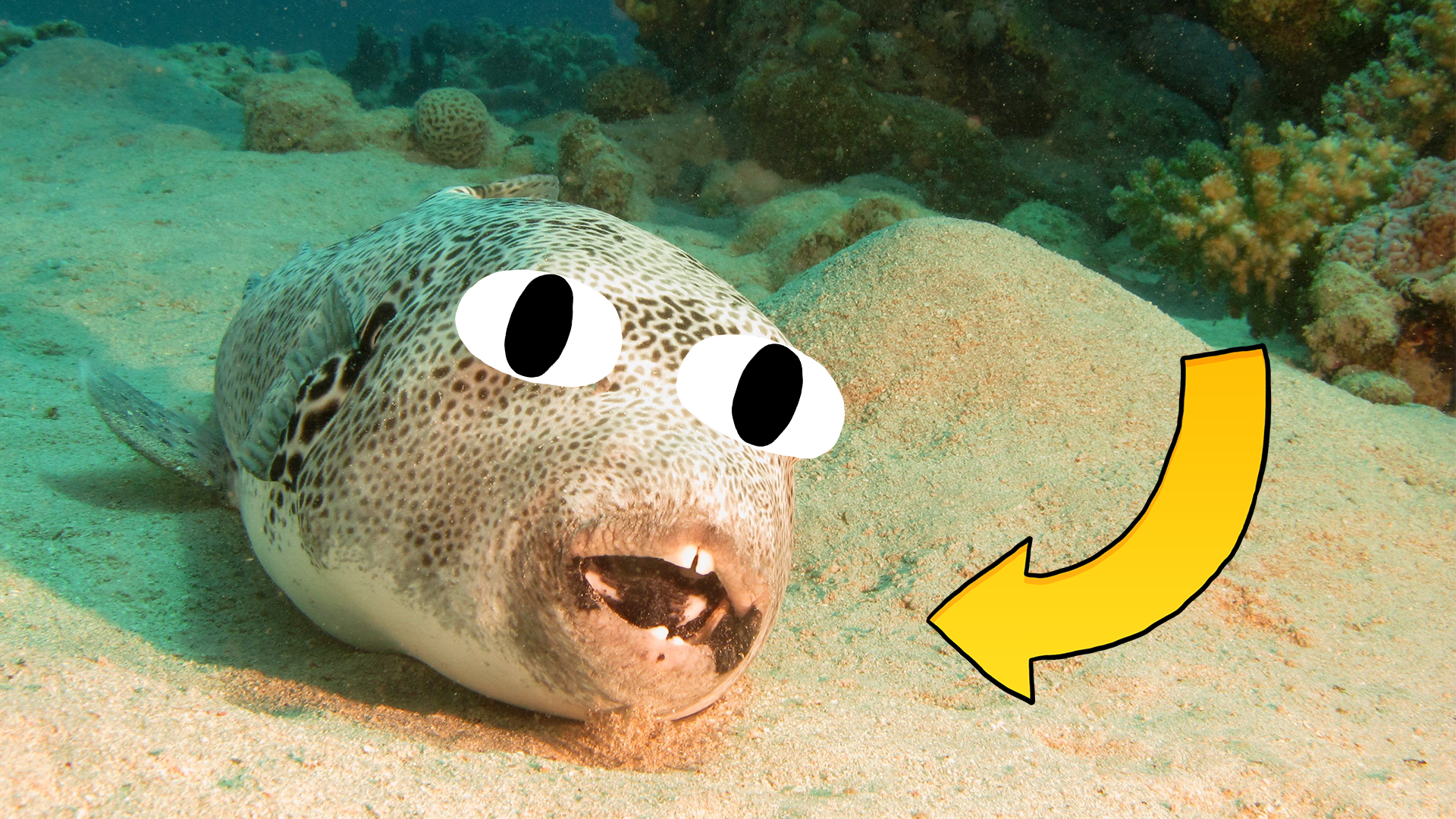
Technically they have teeth - two upper teeth and two lower teeth, which are fused together on each jaw to make a beak-like structure. These teeth never stop growing, so it's important for pufferfish to keep eating hard-shelled animals. Pufferfish love to snack on shellfish, and the larger species use their teeth to crack open mussels, clams and other shellfish.
4. They are VERY poisonous
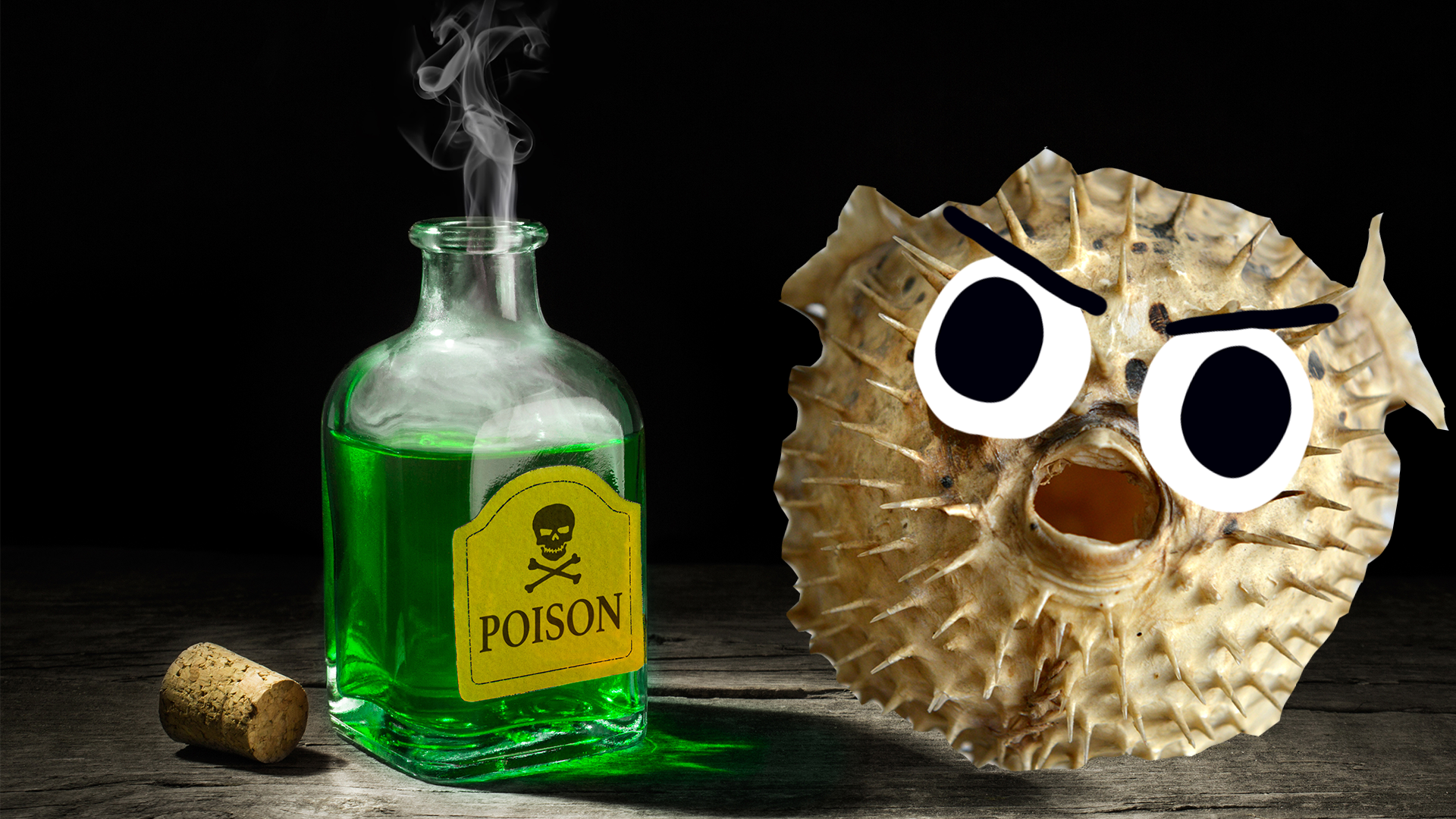
You might have heard that pufferfish are toxic, and this is totally true - they are DEADLY. But you don't need to worry about them biting you - you need to worry about biting them! They contain a large amount of a substance called tetrodotoxin, which is about 100 times more deadly as the venom of a black widow spider, and about 1,200 time more deadly than cyanide! One pufferfish holds enough poison to kill 30 humans, and there is no known antidote. It's not known exactly where the poison comes from, but scientists think it may come from their digestive tract. This is part of their defence mechanism, though it doesn't stop some predators...
5. They have great eyesight
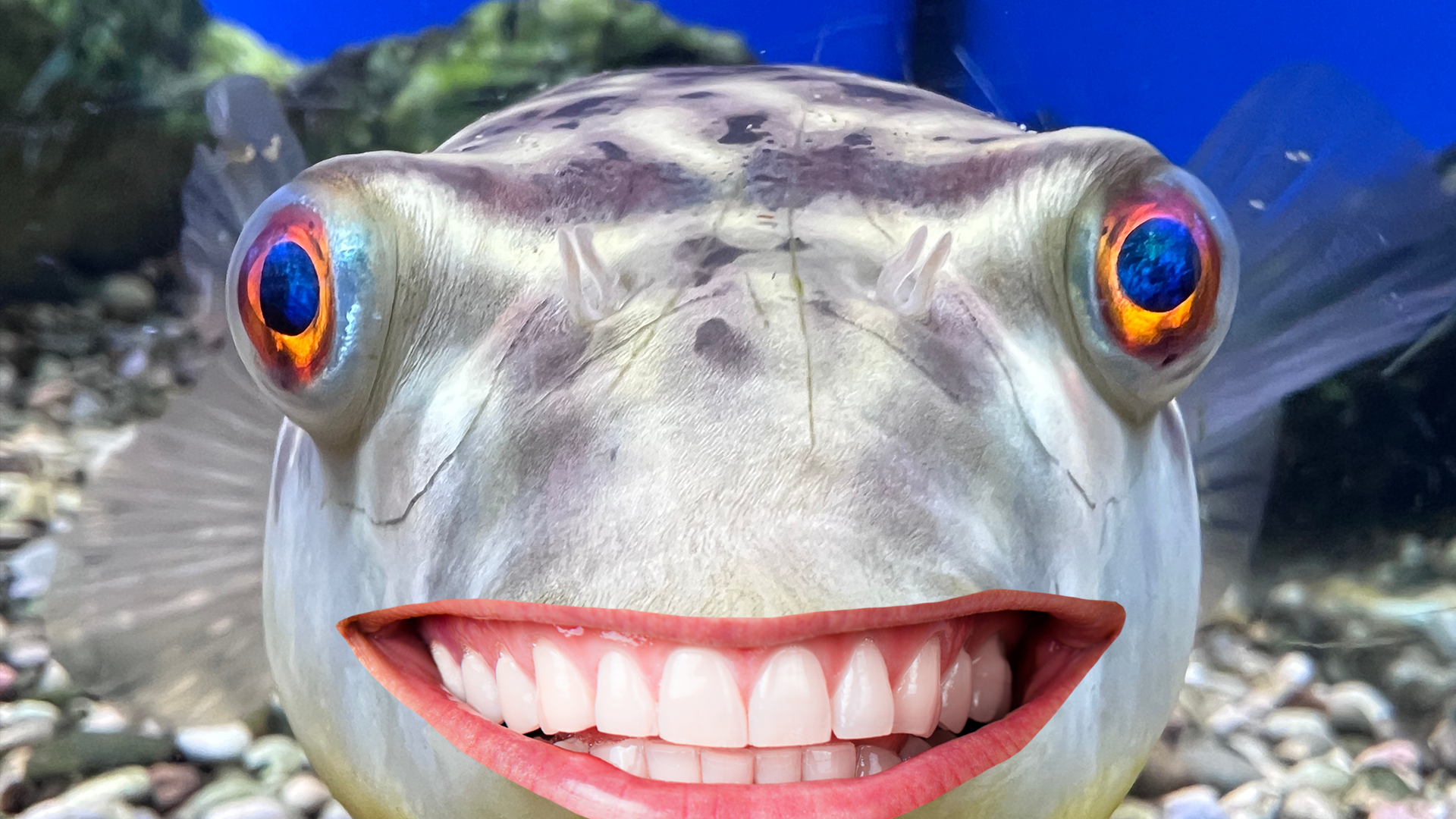
Pufferfish are ambush predators, which means they catch their prey by sneaking up on them and catching them by surprise. It helps to have fantastic eyesight for this, and pufferfish have a great set of peepers! Their eyes can move independently, like chameleons, which helps them to look for prey AND predators at the same time.
6. So, why the puff?
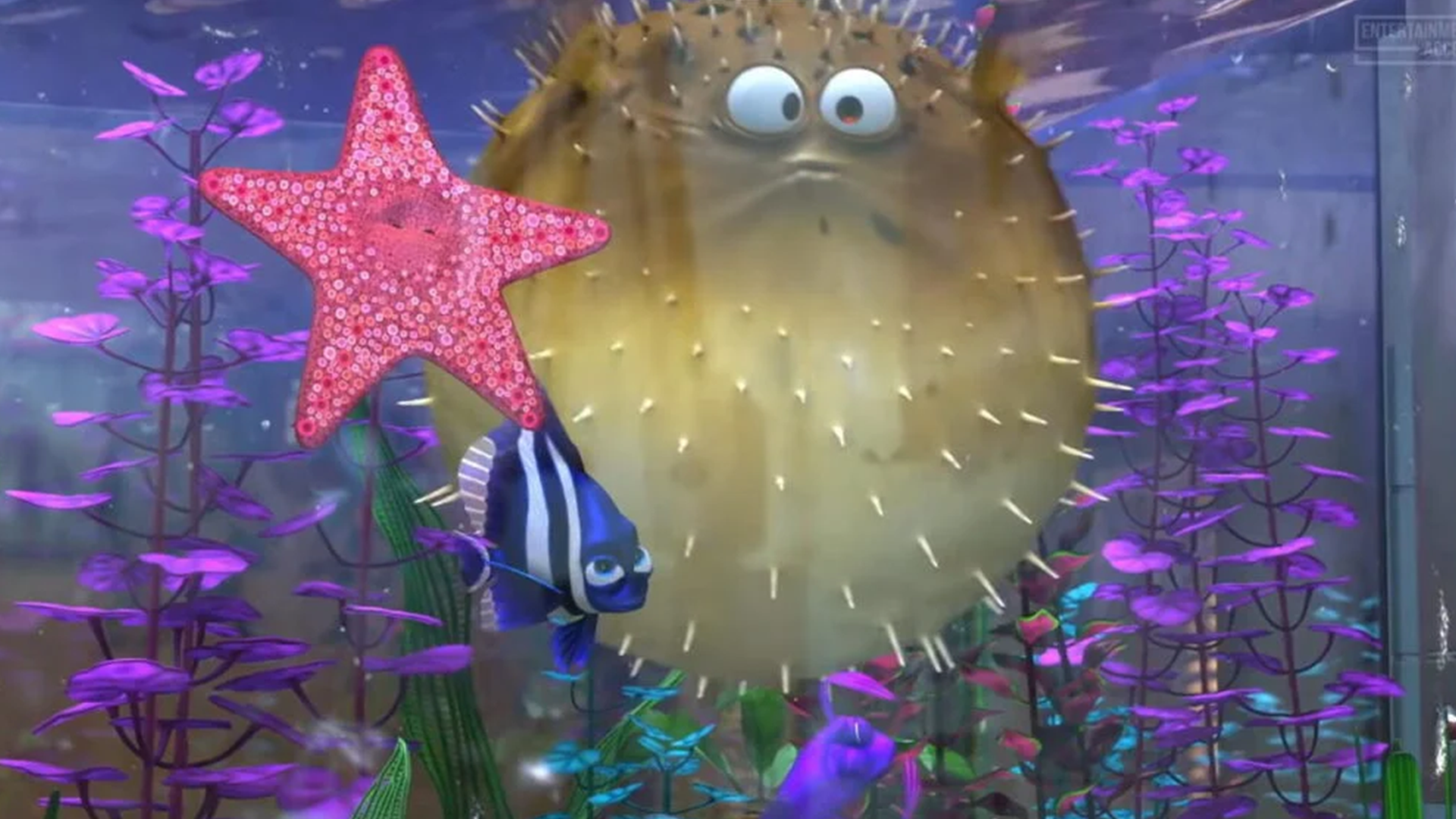
They're already super poisonous and they have good eyesight - so why do they need to puff up, too? It's all part of their defence mechanism. They're not fast swimmers, so they need to have something else under their belts. Pufferfish have very elastic stomachs, and they can puff up in seconds by gulping in a huge amount of water. This makes their spines stand up, which makes it painful for predators to swallow or even handle them! If you've seen Finding Nemo you might remember that Bloat the pufferfish puffs up when he gets agitated, which is sort of accurate! Puffing up isn't always a great idea though - they can't swim when they're fully inflated, and they have to wait until they can expel the excess water from their stomachs. Sometimes curious humans have picked up inflated pufferfish and brought them to the surface, but this isn't a good idea, as they will die if exposed to air for too long.
7. They have a unique way of closing their eyes
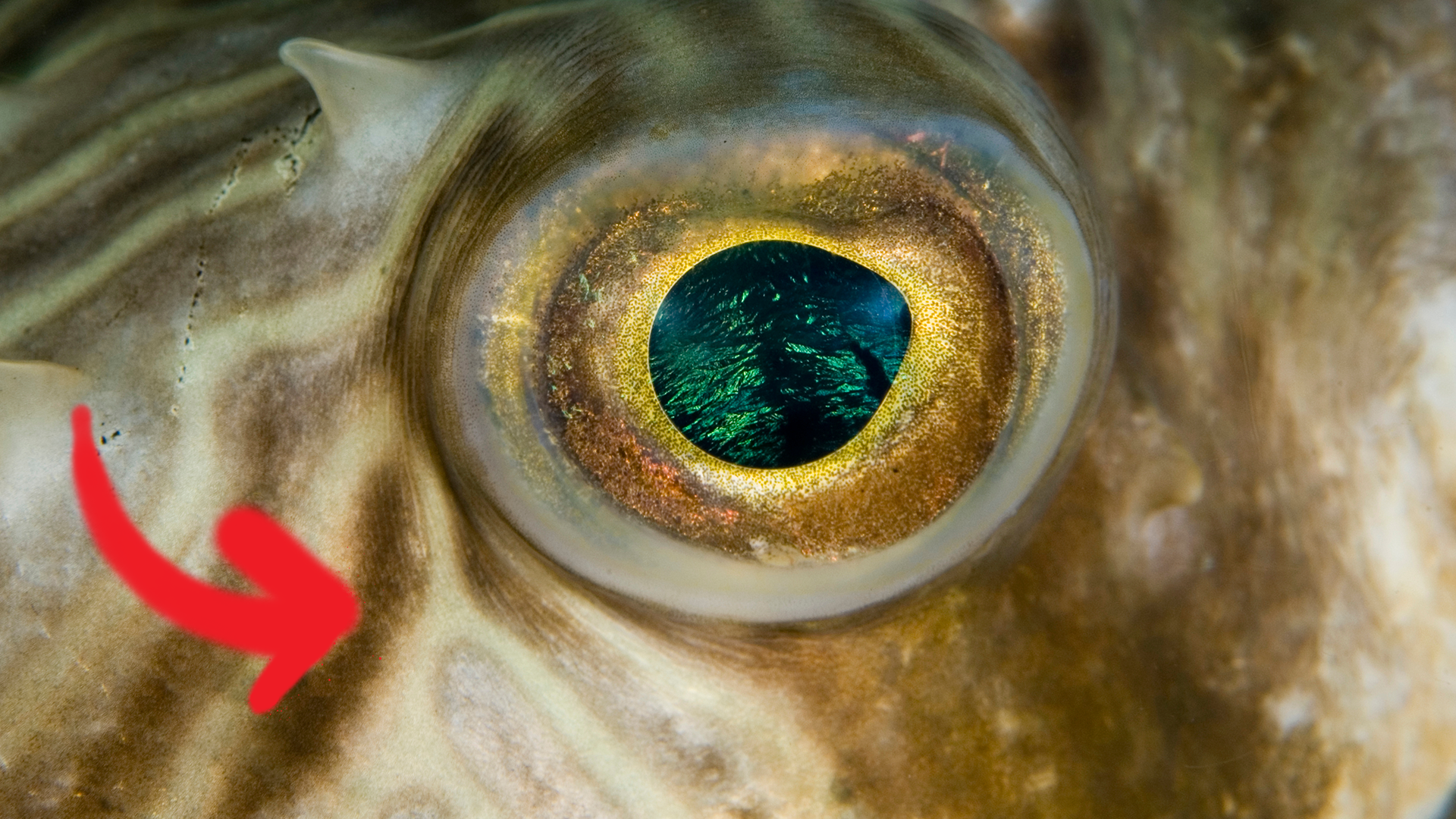
Pufferfish don't have eyelids but they can close their eyes in an unique way. They pull their eyeballs into their eye sockets and squeeze the skin around them closed! Their ability to sink their eyes into their skulls is truly remarkable, and they have one of the greatest eye-sinking depths in the animal kingdom.
8. They don't have scales
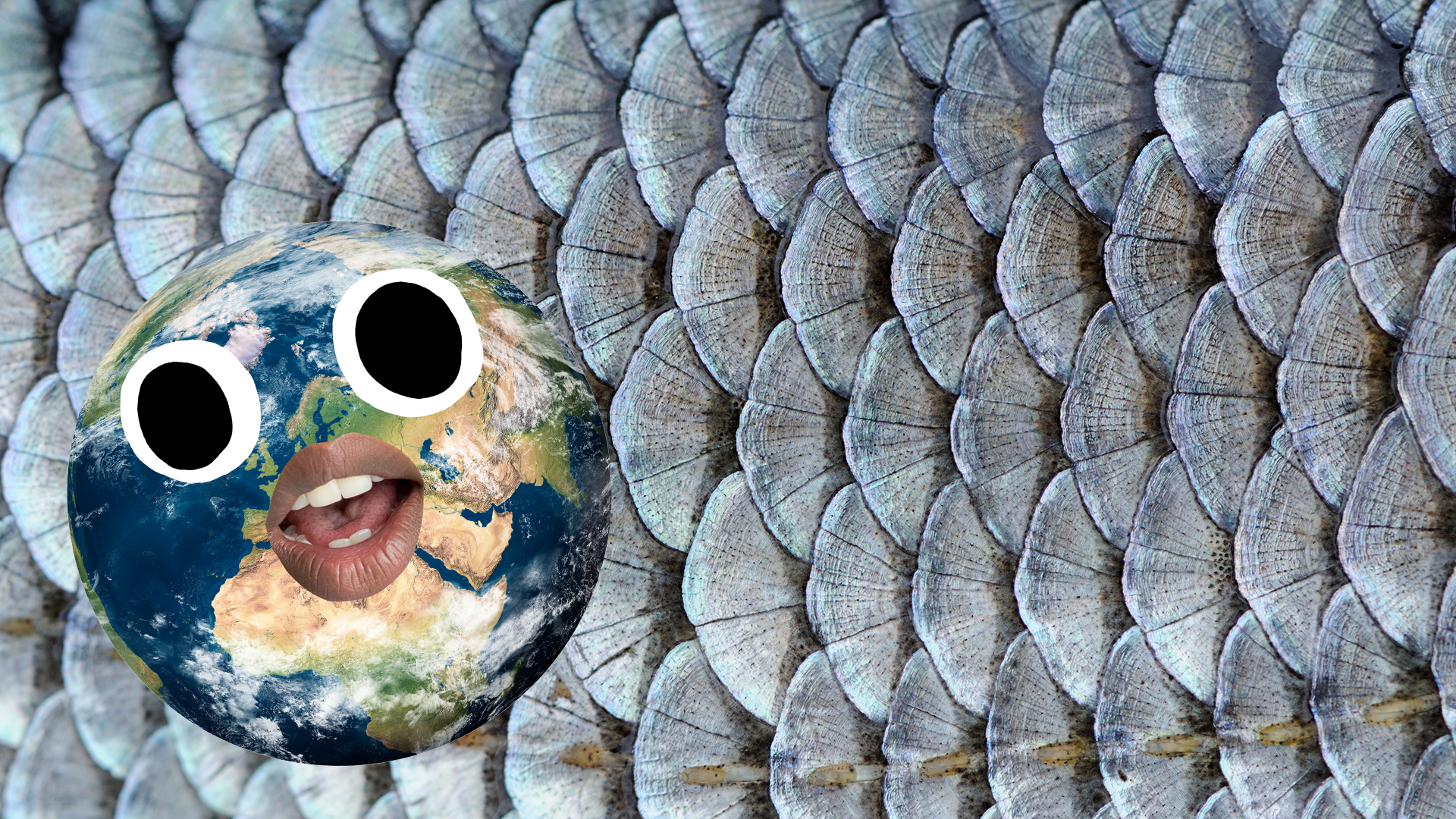
One fact you definitely know about fish is that they have scales. Well, pufferfish don't! Instead they have their characteristic spines, which lie flat when they're not puffed up and kind of resemble scales.
9. They're artists
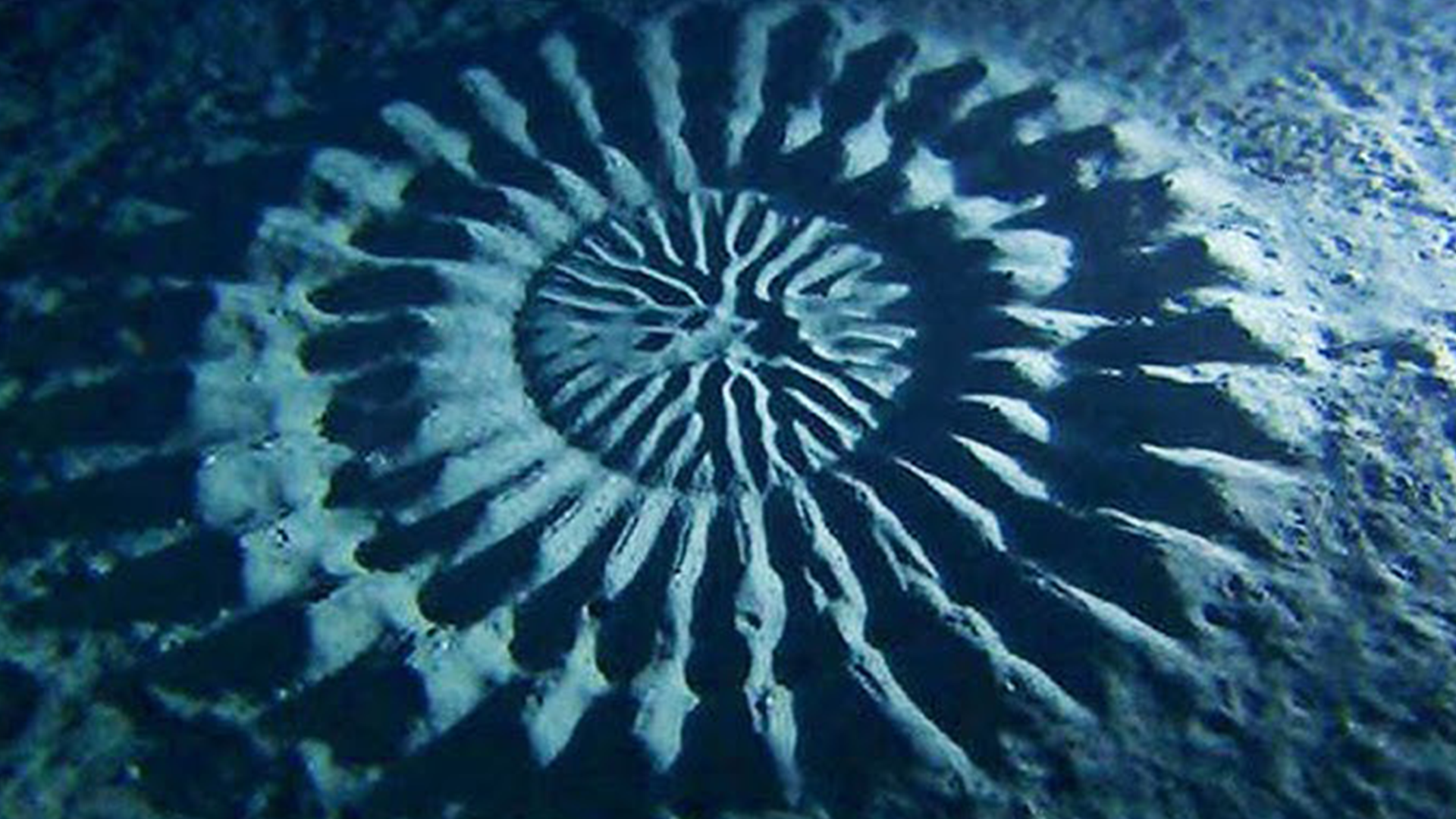
Pufferfish have a curious artistic ability that we still don't understand very well. Divers noticed strange geometric patterns in the sand around pufferfish habitats in1995, but did not identify these patterns until 2013, when a species called the white-spotted pufferfish was discovered off the Ryukyu Islands in southern Japan. They make nests about 2 metres across in beautiful circular patterns, using their stomachs to shape the sand. It takes about a week to make one, and the fish even decorate them with shells sometimes! The male fish do this to impress the females - the bigger and more complex the pattern, the better the fella!
10. They can get big
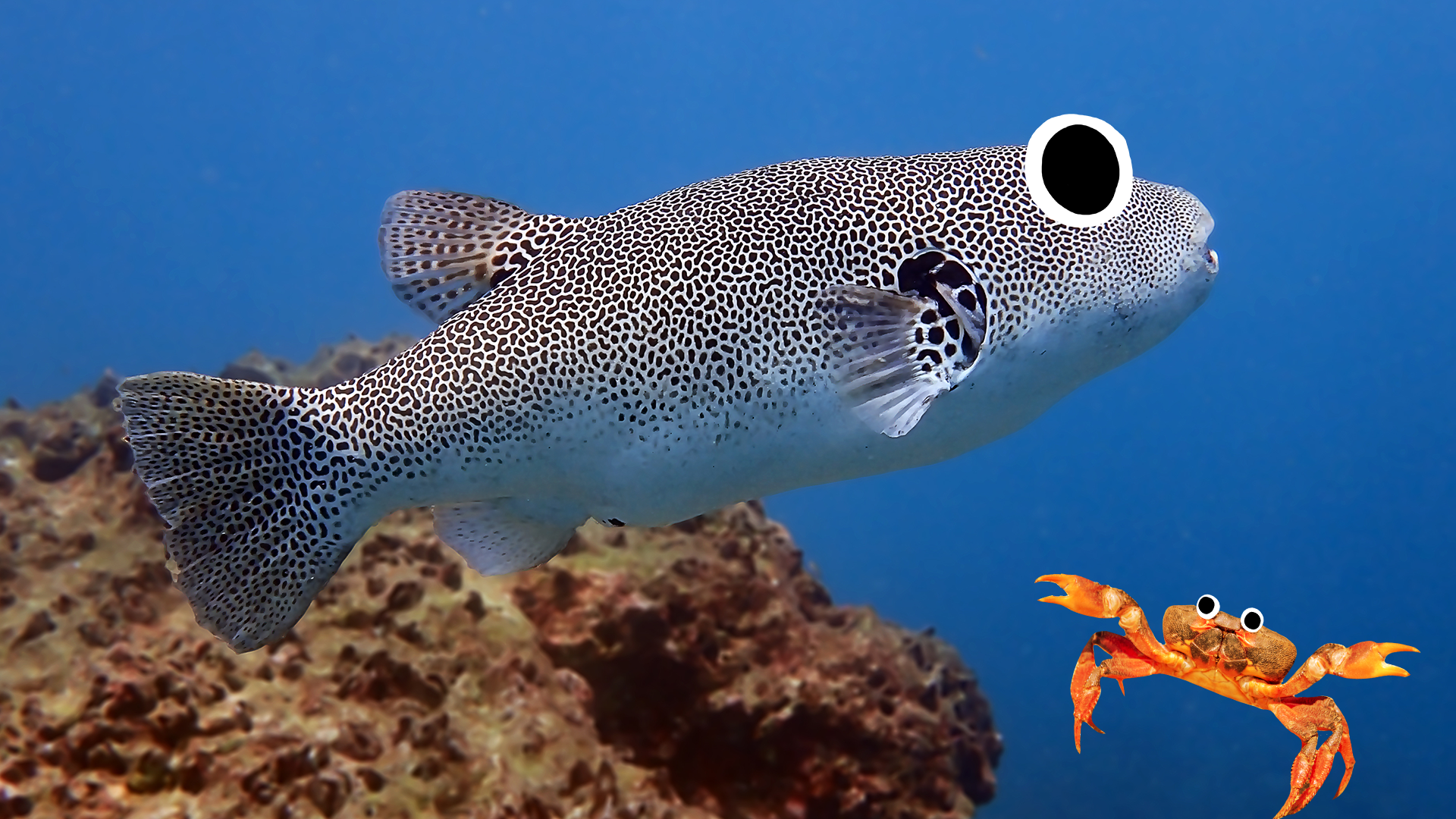
And not just when they're puffed up! The largest pufferfish, the giant freshwater pufferfish, is about a metre long! On the other hand, the smallest species is only about 8cm long!
11. Dolphins like them!
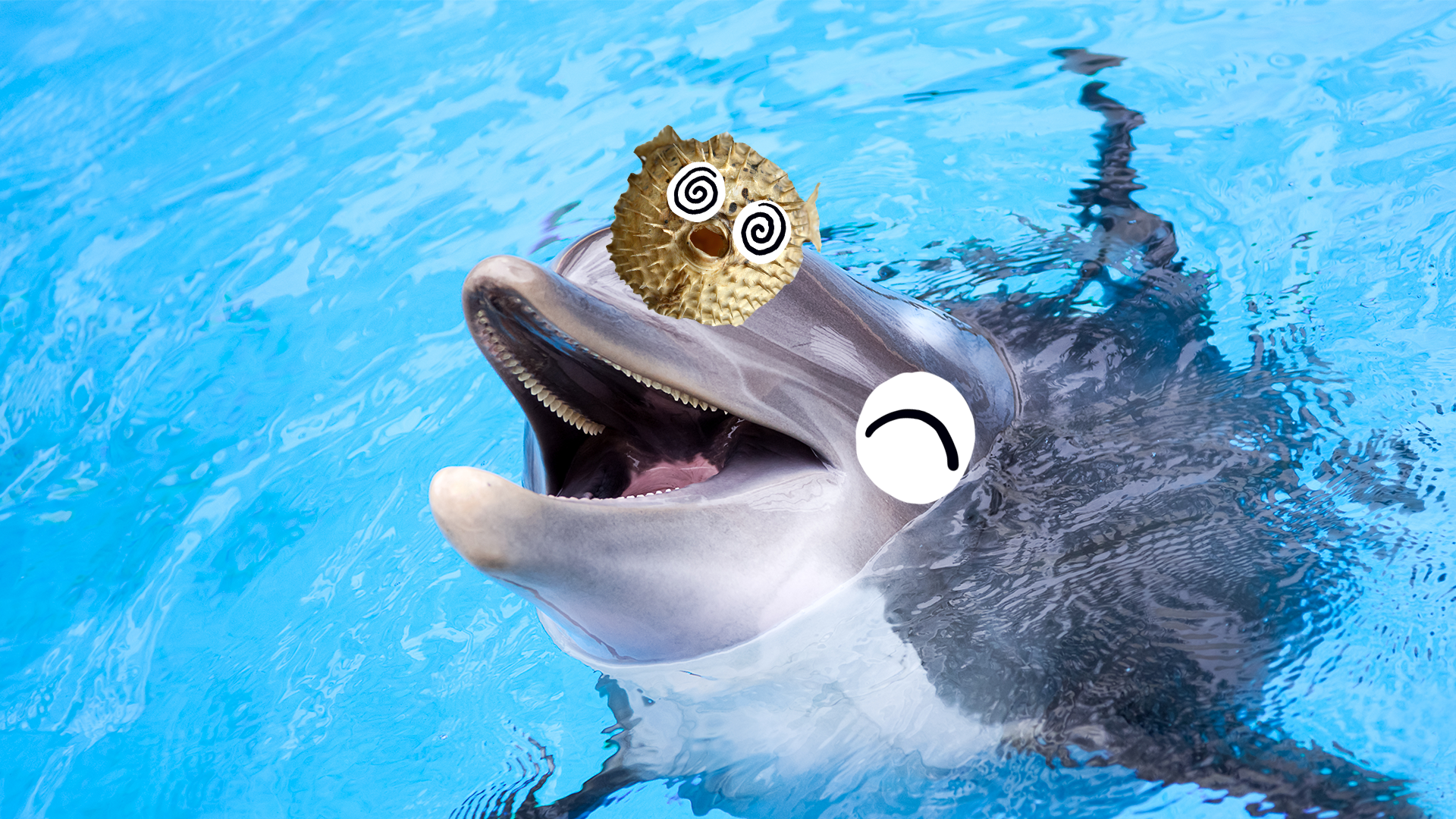
Dolphins have been observed doing something very strange - picking up pufferfish with their heads, and passing them from dolphin to dolphin. This seems to make the dolphins enter a trance-like state as they absorb pufferfish venom. It's not fully understood why they do this, but it might mean that dolphins are the only non-human species that deliberately use substances to change their moods.
12. They're a very special delicacy
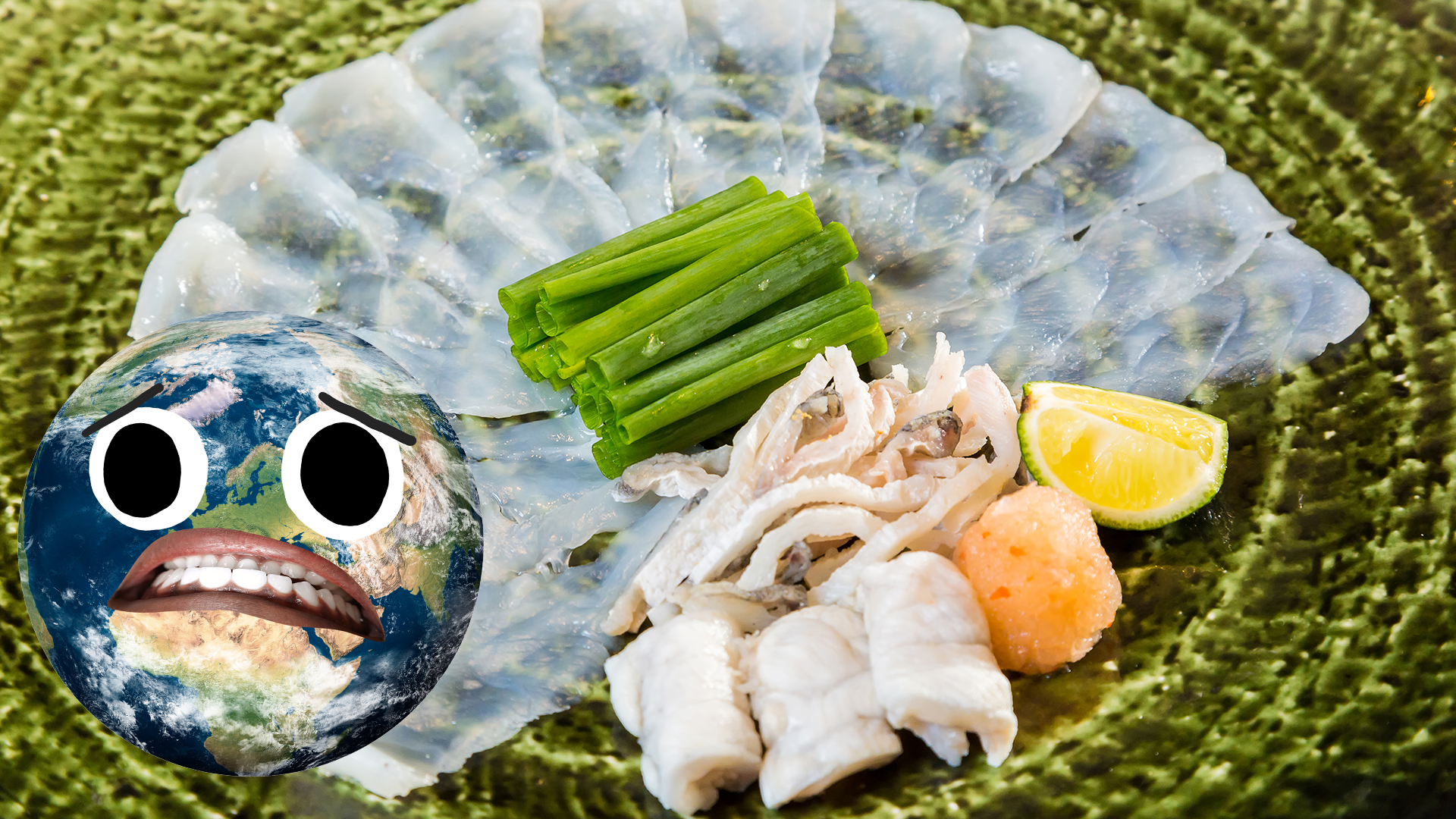
You know how pufferfish are incredibly poisonous? That must mean that anyone who tries to eat one must be crazy! Well, that's not quite the case - pufferfish is a great delicacy in several parts of the world, most notably in East Asian cuisine. Pufferfish meat is called fugu in Japanese, and it can be served as soup or sashimi, but you'd better make sure it's prepared properly! Japan, Korea and the USA have VERY strict laws about preparing and selling fugu (bogeo or bok in Korean), and chefs need three years of training before they're allowed to make it. There are a LOT of cases of people trying to make fugu at home, and becoming seriously ill or even dying. Selling pufferfish for consumption is totally banned in the EU (though private consumption is allowed in Switzerland) - don't expect to rock up to a bistro in Paris and order some fugu soup!
13. Most predators can't survive eating them!
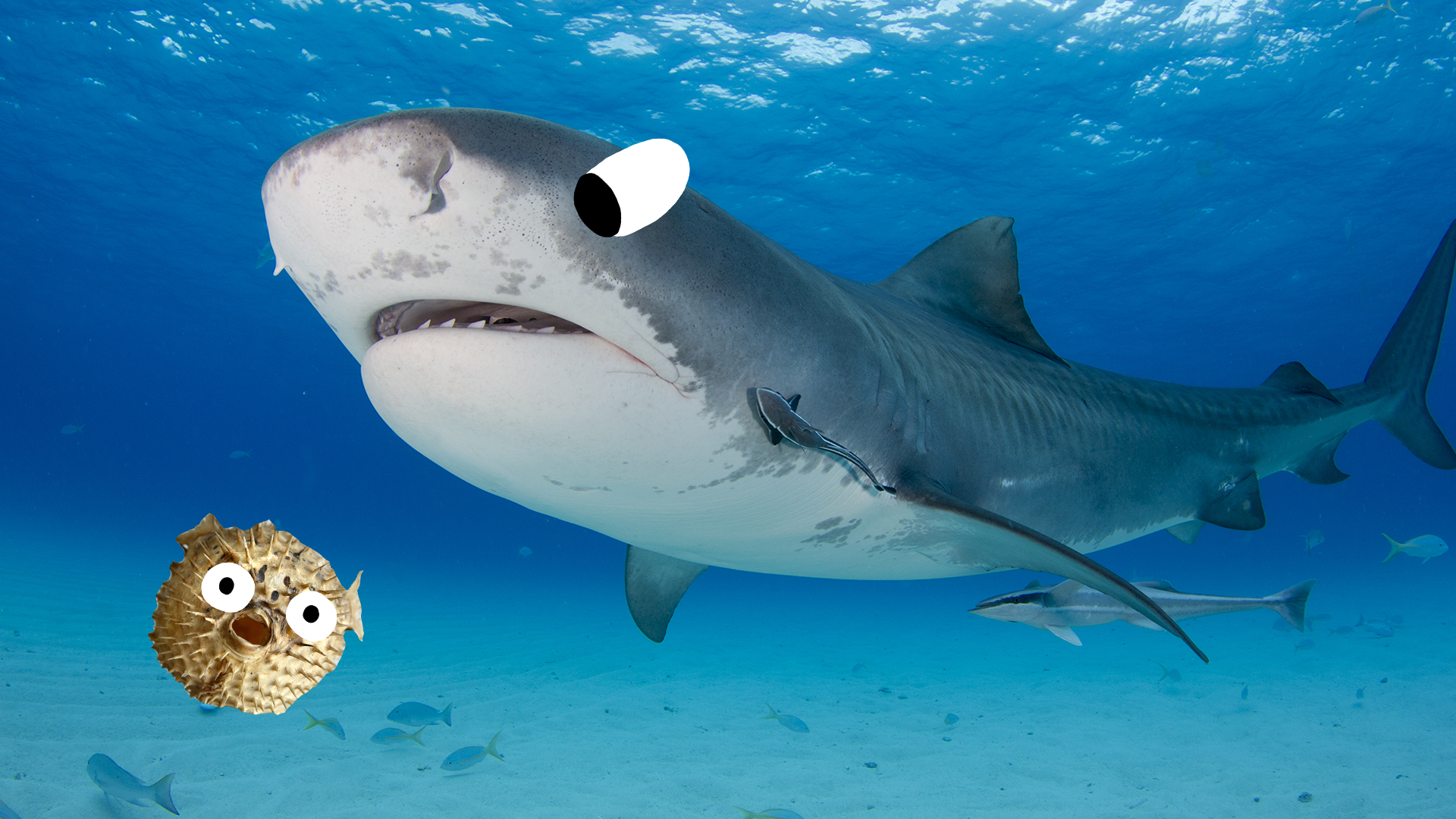
A lot of predators like to try to eat pufferfish, but can't get past their sharp spines or their deadly poison (they should probably have gone to chef school for three years!). Sharks are one predator that can withstand the poison, so pufferfish need to be careful in shark-infested waters!
14. They're not for beginner aquariums
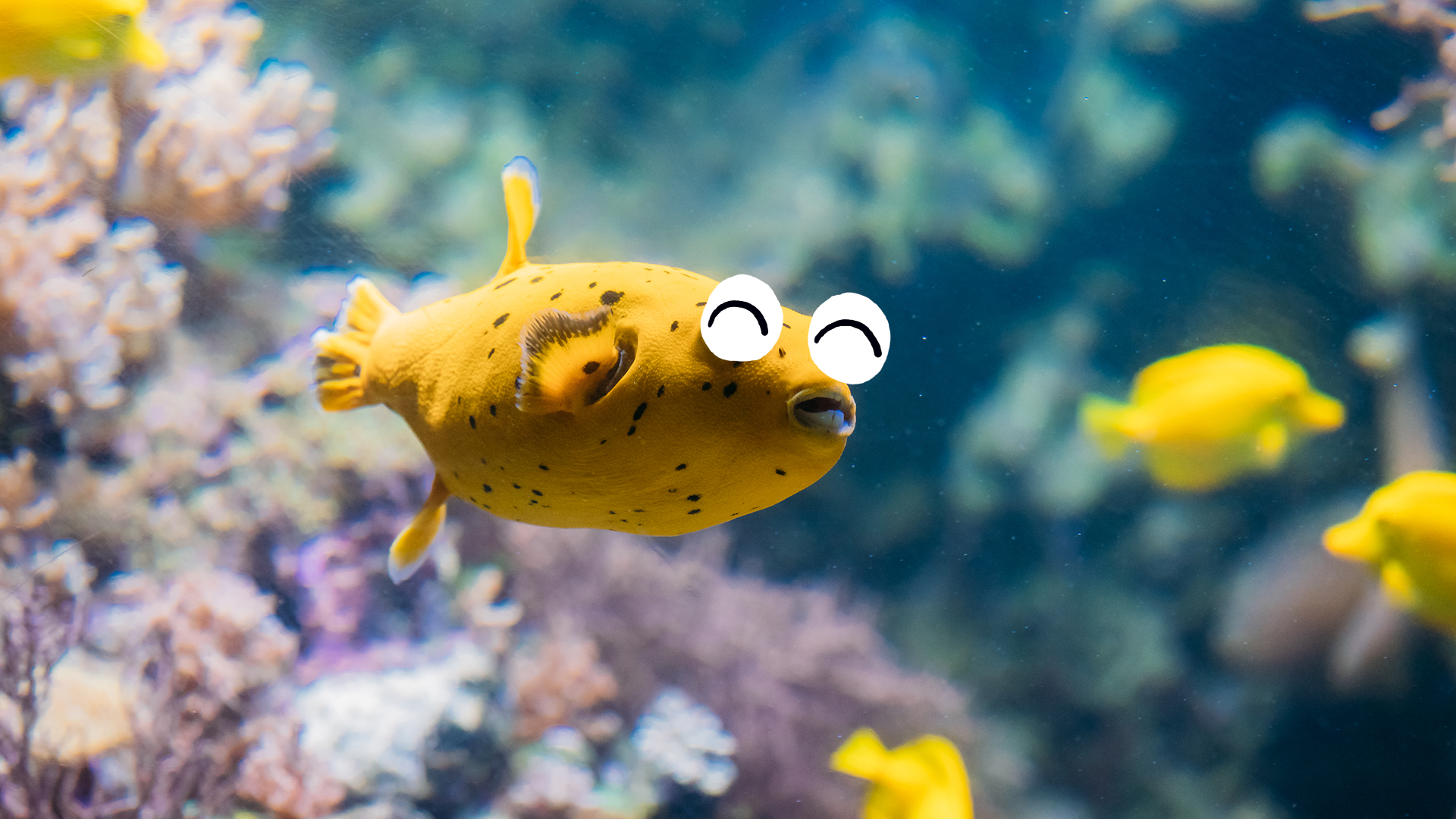
Pufferfish are adorable, and safe to keep in captivity (as long as you're not planning to eat it!), so maybe you're tempted to get a pet pufferfish! If that's the case, make sure you don't rush into anything. The smallest pufferfish needs a tank of at least 30 gallons, and the bigger species will need 125 gallons at the very least! They've also been known to sometimes get aggressive with their tankmates, and those sharp beaks can do some damage. If you put in the hard work and care, they can be rewarding pets - they have playful personalities, and are great at keeping snails out of the fishtank.
15. They're not endangered... mostly
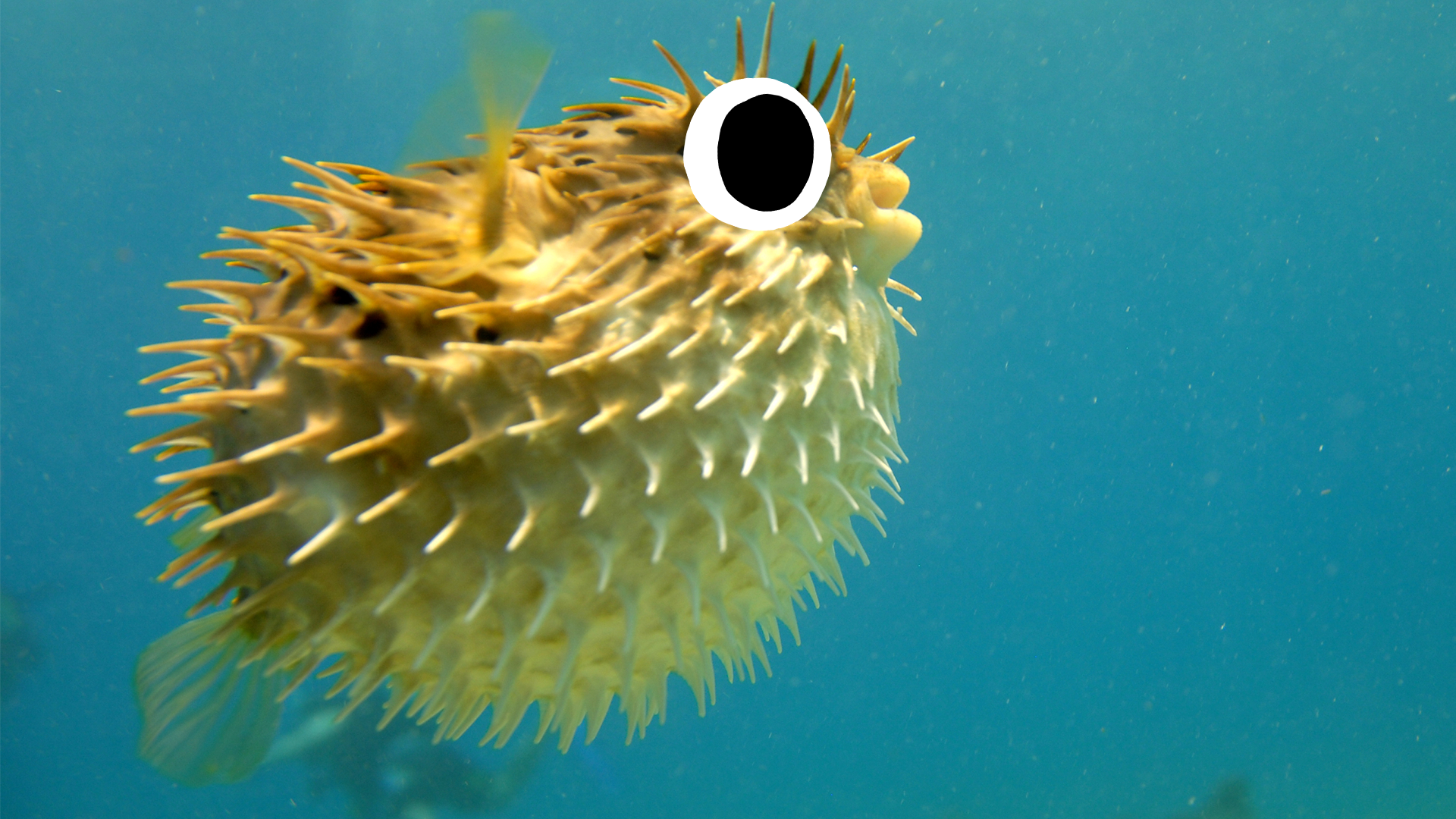
Two species of the takifugu genus, the Chinese puffer and the takifugu plagiocellatus, are critically endangered and endangered respectively. This can be helped by reducing the consumption of fugu (though there's a good chance you don't eat it anyway!). But, most species are not currently endangered - though of course this may change in the future as their environments are affected by climate change.




